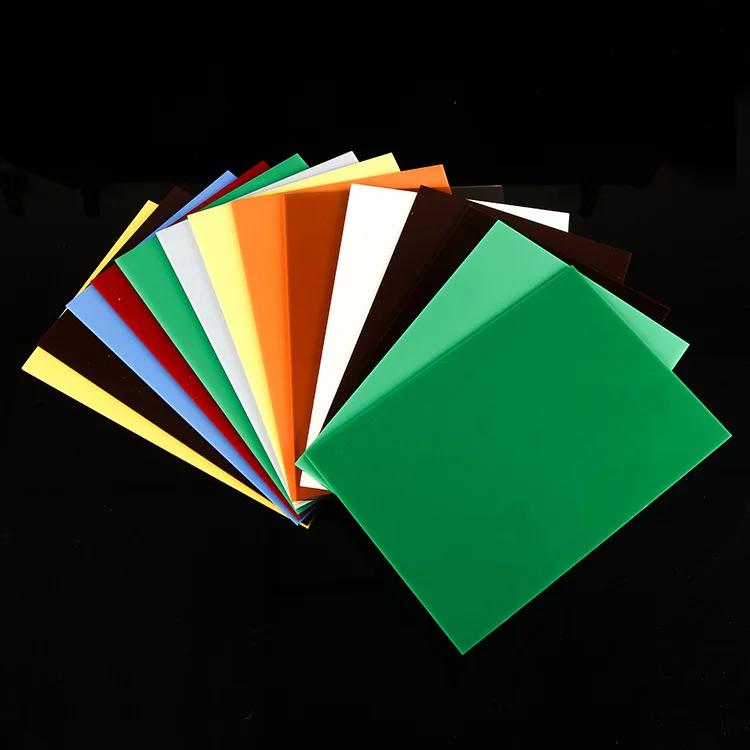Selecting & Prep Acrylic Sheets
Acrylic sheets can be used in different DIY projects, commercial signage, home decoration and furniture design because they are a clear plastic alternative for glass that is shatter-resistant. However, the numerous types available in thousands of sizes and qualities overwhelm first-time buyers. This guide will simplify your journey to buying an acrylic sheet, helping you make the right purchase without losing quality due to ignorance.
What Thickness, Clarity and durability mean
The thickness of the acrylic sheet makes a big difference to how strong or pliable it is, and for what kind of application its best suited too. Thinner (1/8-in. to 1/4 in.) sheets work well for picture frames, light-duty doors or frosted glass effects (check out a sample of the material on-site), and thicker panels make good signs but less-durable tabletops and door inserts. Thicker sheets (1/4 to 1 inch) are more commonly found as table tops, shower enclosures or outdoor panels needing strength and rigidity. However, clarity is key — choose a premium grade acrylic with available low yellowing index where discolouration via natural aging will not happen over time.
In terms of both durability and longevity, acrylics are perennially superior as they withstand the onslaught of UV light compared to other polymers that decolourize or break under this stress. Structures exposed to sunlight or any harsh conditions will deteriorate over time if not specifically designed for an outdoor installation as the materials used might de-form, change color and generally become brittle unless they've been adequately treated during manufacture with UV-stabilizing chemicals.
How To Find A Great Deal On Acrylic Sheets Without Sacrificing Quality
Find the Best Deals for Reliable Suppliers In Person Or Online Without Compromising Quality Remember to add in the shipping cost when you purchase any goods online. Supplier mailing lists and social media pages supplier are also one way to get great discounts on clearance sales. You can also save costs by purchasing off-cuts or remnants if your project allows smaller pieces, for a cheaper price but material integrity.
DIY or Professional Use? How To Identify The Right Acrylic Sheet Specifications For Your Project
Depending on the complexity of your project and the finish you are looking for will generally make it pretty clear whether standard, extruded or cast acrylic is right for that job. It is possible because cast acrylic gives clearer factory edges while easily finalized for sensitive designs and professional purposes such as aquariums, medical equipment. Although less clear than cast, extruded acrylic is easier to cut and shape into useful forms for DIY projects or mass production. Before selection consider your level of skill the precision and budget
How to Cut and Work With Acrylic Sheets Like a Pro in 5 Simple Steps
1. Measure Twice, Cut Once:
Precision is essential given that accurate measurements are needed. With the help of a straight edge and a fine-tip marker, make this cutting line on away.
2. Protective Measures:
Make sure you have on safety goggles and gloves to prevent injury plus fingerprints off the acrylic.
3. Score and Snap:
Score the marked line with a special acrylic cutter or your trusty utility knife. Use even pressure, and ensure you do multiple passes for a clean score. Next gently bend the sheet along a score line and then put pressure on one side while keeping it rested on the straight edge now use your other hand to Pull back with firm even fast stroke till scored across its length, thus snapping off excess material.
4. Smooth Edges:
Use fine-grit sandpaper to smooth the scored edges.
Maintaining Your Acrylic Sheets for Durability and Scratch Resistance
Ways to Care for AcrylicAcrylic must be cared for in a manner that is so simple it seems effective.
- Cleaning:
Wipe with a warm water moistened, mild soap damp cloth. DO NOT USE ANY abrasive cleaners or scrubbers.
- Polishing:
Every once in a while you can opt for an acrylic-safe polish if you prefer the glossy finish.
- Handling:
Use lift not drag to stop acrylic sheets from getting scratches.
- Storage:
Store either horizontally or vertically to avoid warping and cover with a soft cloth to protect from dust and scratches.
By learning about all these main traits of picking, managing and up keeping acrylic sheets you are ready to start working from your first little DIY assembly until a professional grade installation. The method described above can give you a beautiful, long-wearing, affordable clue for all kinds of imaginative uses.

 EN
EN











































 ONLINE
ONLINE